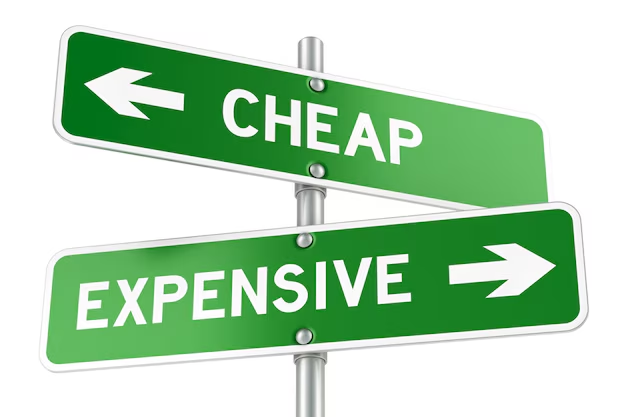The Dangerous Trap of Competing on Price
At first, lowering prices feels like a quick win. You attract customers, beat competitors, and boost sales temporarily. But for many founders, underpricing becomes a silent killer. It drains profits, devalues your brand, and makes it almost impossible to scale.
A Harvard Business Review study found that a 1% drop in price can reduce profits by up to 10% if not offset by higher sales. The math is brutal.

Why Customers Don’t Actually Want “Cheap”
Cheap pricing doesn’t always win customers. People often associate price with quality. If you undercharge, they may question your credibility or assume your product is inferior.
Lesson: Competing on price signals weakness, not strength.

The Profitability Problem
Low prices also trap businesses in survival mode. You work harder, sell more, and still have little left over. This leaves no room for growth, marketing, or innovation.
Case Study: Many small retailers try to undercut Amazon but instead, they burn out with razor-thin margins they can’t sustain.

Brand Value and the Perception Game
Big brands know pricing is storytelling. Apple doesn’t sell the cheapest phone, and Starbucks doesn’t sell the cheapest coffee. They sell experiences, trust, and identity.
Quote: “Price is a signal. If you price too low, you’re telling the market you don’t believe in your own value,” says pricing strategist Julie Schwartz.

How to Compete Without Racing to the Bottom
Instead of slashing prices, businesses can:
- Differentiate on value (better service, features, or story)
- Target the right customers who prioritize quality over cheapness
- Build brand equity so customers pay for trust, not price
- Offer tiers so buyers choose, rather than you discounting everything
Lesson: People will pay more if you give them a reason to.

Conclusion: Price With Confidence
Low pricing feels safe, but it’s often the fastest way to kill a business. True growth comes from believing in your value, setting prices that reflect it, and building a brand that earns loyalty no discounts required.
Takeaway: Competing on price is a race to the bottom. Competing on value is how you win.
FAQs
1. Why is low pricing bad for business?
It cuts into profits, damages brand value, and creates unsustainable operations.
2. Do customers always want cheaper prices?
No many prefer to pay more for trust, quality, and experience.
3. How do big brands avoid price wars?
By building strong brand equity and competing on value, not discounts.
4. Can small businesses charge premium prices?
Yes if they differentiate clearly and market to the right audience.
5. What’s the best alternative to discounts?
Tiered pricing, value-added services, and strong brand storytelling.






